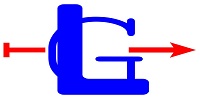A quality DNA sample is vital for a variety of downstream applications, such as PCR and sequencing. DNA purification is the process that removes contaminants from the sample, like proteins or other cell components. This creates an nucleic acid solution that is ready for use. There are many different DNA purification methods each with its distinct advantages and disadvantages, based on the starting material or the application.
The first step in DNA purification is removing proteins why not look here from the sample using a proteinase (protein enzyme) or mechanical disruption. After the cellular debris has been removed, the DNA may be precipitated by the aid of ethanol to create a stringy, white precipitate. The DNA that is precipitated can be resuspended in water or a clean solution. The DNA’s concentration is then determined by spectrophotometry, based on the absorbance peak for nucleic acids at 260 nm.
Another popular method for DNA purification is salting out. In this method, a cellulose column is utilized to capture and bind DNA. The cellulose matrix needs to be treated with detergents to remove contaminants. A wash buffer is then used to remove the salts. DNA binds to the matrix under low-salt conditions. Contaminating proteins andRNA can be cleaned off using solutions with higher salt levels. The DNA that has been eluted is recovered through the precipitation of ethanol.
Anion exchange is also a well-known method of purifying DNA. This method uses a cation-exchange resin to attract positively-charged DNA molecules, and neutralizing resins allow negatively charged DNA to be removed of the column. After the DNA has been eluted from the anion exchange column, it can be concentrated using centrifugation before being washed by ice-cold 70% ethanol to separate out the DNA.
